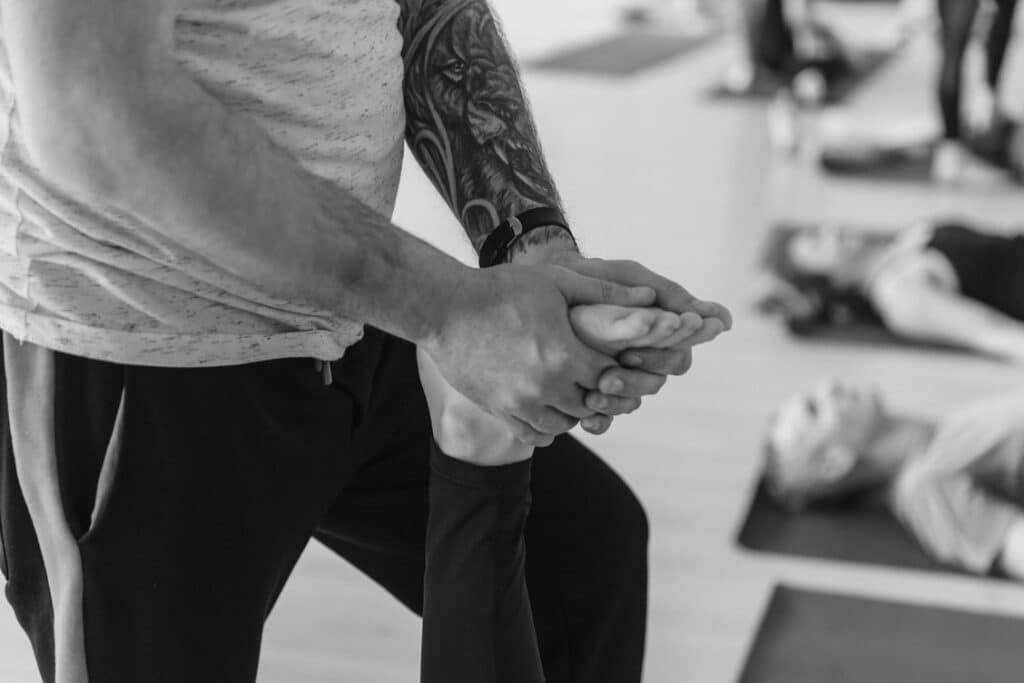
Foot mobility can play an important role in knee health. The foot and ankle joint serve as the foundation for the entire lower extremity, and problems with foot mobility can lead to compensations and stress on the knee joint.
If the foot and ankle joint are not moving properly, this can result in altered mechanics of the lower leg and knee, leading to overuse injuries and pain. For example, if the foot is excessively pronated (rolls inward) or supinated (rolls outward), this can cause the lower leg and knee to rotate, resulting in increased stress on the knee joint.
By improving foot mobility, it is possible to improve lower extremity mechanics and reduce stress on the knee joint. This can be accomplished through exercises designed to improve foot and ankle mobility, such as ankle circles, heel raises, and toe curls. These exercises can help to improve the flexibility and strength of the foot and ankle muscles, improving overall lower extremity alignment and reducing knee pain and discomfort.
In addition, proper footwear can also play a role in foot and knee health. Shoes that provide proper support and cushioning can help to reduce stress on the foot and ankle, improving lower extremity mechanics and reducing knee pain.
Overall, improving foot mobility can be an effective way to reduce knee pain and improve lower extremity mechanics. If you are experiencing knee pain or discomfort, it is important to consult with a healthcare provider or physical therapist to determine the underlying cause and develop an appropriate treatment plan.
STRETCHING THE FASCIA IN YOUR FEET
The fascia is a connective tissue that surrounds and supports muscles, bones, and organs throughout the body. In the feet, the plantar fascia is a thick band of tissue that runs along the bottom of the foot, connecting the heel bone to the toes. When the plantar fascia becomes tight or inflamed, it can lead to foot pain and discomfort, particularly in the heel.
Stretching the fascia can help to improve foot mobility and reduce the risk of foot pain and discomfort. One effective way to stretch the plantar fascia is to perform a standing calf stretch. Here’s how to do it:
- Stand facing a wall with your feet shoulder-width apart.
- Step your left foot forward and your right foot back, keeping your heels on the ground.
- Place your hands on the wall at shoulder height.
- Lean forward into the wall, keeping your back leg straight and your front knee bent.
- Hold the stretch for 15-30 seconds, then switch legs and repeat.
You can also use a tennis ball or foam roller to stretch the plantar fascia. Simply place the ball or roller under the arch of your foot and roll it back and forth, applying pressure to the fascia. This can help to break up adhesions in the fascia and promote improved foot mobility.

